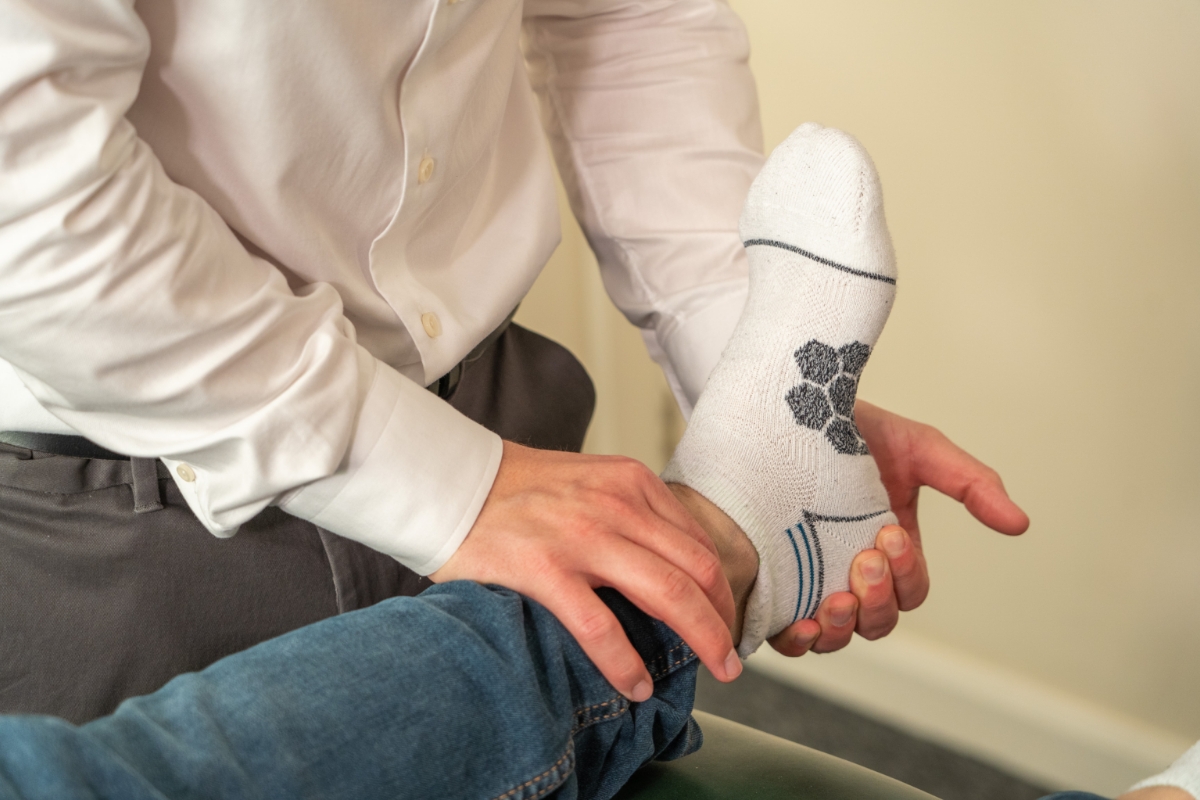Ankle pain can influence your everyday activities—walking the dog, climbing stairs, or going to the gym. At Acomb Chiropractic Clinic, we are committed to helping you understand why your ankle hurts, explore non-drug treatment options, and adopt strategies which aim to protect your ankles for the long term. Whether your pain is the result of a sudden injury or has developed gradually through overuse, our goal is to restore your mobility and keep you active.
Understanding ankle anatomy and pain mechanisms
Your ankle is a hinge joint formed by three bones: the tibia and fibula of the lower leg, and the talus of the foot. Supporting this bony framework is a network of ligaments that stabilise the joint, tendons that connect muscles to bones, and cartilage that cushion impact. A delicate balance of strength and flexibility allows for up-and-down movement (dorsiflexion and plantarflexion) as well as side-to-side motion. When any element—bone, ligament, tendon, or cartilage—becomes injured or dysfunctional, the result can be pain, swelling, stiffness, or weakness.

Common causes of ankle pain
- Ankle sprains – The most frequent ankle injury, sprains, occur when ligaments stretch or tear, often from rolling or twisting the foot. Symptoms include immediate pain, bruising, and difficulty weight bearing.
- Tendinopathies – Overuse of the Achilles tendon (Achilles tendinitis) or peroneal tendons can inflame these structures, causing pain at the back or outside of the ankle, especially during activity.
- Arthritis and Osteoarthritis –Degeneration of cartilage within the ankle joint leads to grinding sensations, stiffness, swelling and pain—particularly after periods of inactivity.
- Biomechanical imbalances – Flat feet, high arches, or improper gait mechanics can place uneven stress on the ankle, leading to chronic pain over time.
Not all ankle issues are suitable for chiropractic care. Therefore, a thorough assessment is essential to ensure accurate diagnosis, effective management, and tailored recommendations for your specific concerns.

Chiropractic approaches to ankle pain
Chiropractic care offers a non-invasive, drug-free path to treatment, and aims to address both symptoms and root causes. Our treatment toolkit includes:
- Ankle joint mobilisation and manipulation Gentle, hands-on techniques aim to restore proper movement and alignment between the tibia, fibula, and talus, to reduce friction and promote smoother motion.
- Soft-tissue therapy: Trigger point technique , vibration massage and soft tissue stretching techniques can break down adhesions, decrease muscle tension, and improve blood flow to injured tendons and ligaments.
- Kinetic chain assessment Misalignment or dysfunction in the hips, spine, or feet can reverberate down to the ankle. By evaluating and treating any issues in the lower-limb chain, we aim to ensure balanced weight distribution and fewer compensatory stresses on the ankle joint.
- Myofascial dry needling/acupuncture Can be particularly helpful for joint pains, especially those associated with arthritis and/or those with a chronic history.
Rehabilitation and preventive strategies
Long-term relief hinges on active rehabilitation and lifestyle adjustments. Key components include:
- Targeted exercises A customised program of stretching and strengthening—for calf muscles, peroneal muscles, and intrinsic foot muscles—This can support the ankle and can help to restore improved range of motion.
- Proprioceptive training Balance drills on wobble boards or foam pads retrain the neuromuscular system to stabilize the joint during dynamic movement, reducing re-injury risk.
- Footwear and orthotics Supportive shoes or custom orthotics correct biomechanical faults—such as overpronation or supination—minimising uneven stress on the ankle.
- Gradual load progression Whether returning from injury or starting a new sport, increase intensity and duration slowly to allow tissues to adapt without overload.
Get in touch
At Acomb Chiropractic Clinic, we are committed to helping you if we can. Is persistent ankle pain limiting your daily activities and life in general? We encourage you to contact us for a personalised consultation. Our experienced chiropractic team will conduct a thorough assessment, explain our findings and what we think is possible in clear terms. If appropriate, we will develop a personalised treatment plan tailored to your specific condition and goals, aiming to maximise your possible benefit.
Not all complaints are appropriate for chiropractic care: If we think we cannot help your complaint, or you require more investigation, we will do our best to support you in finding you another path forward.
